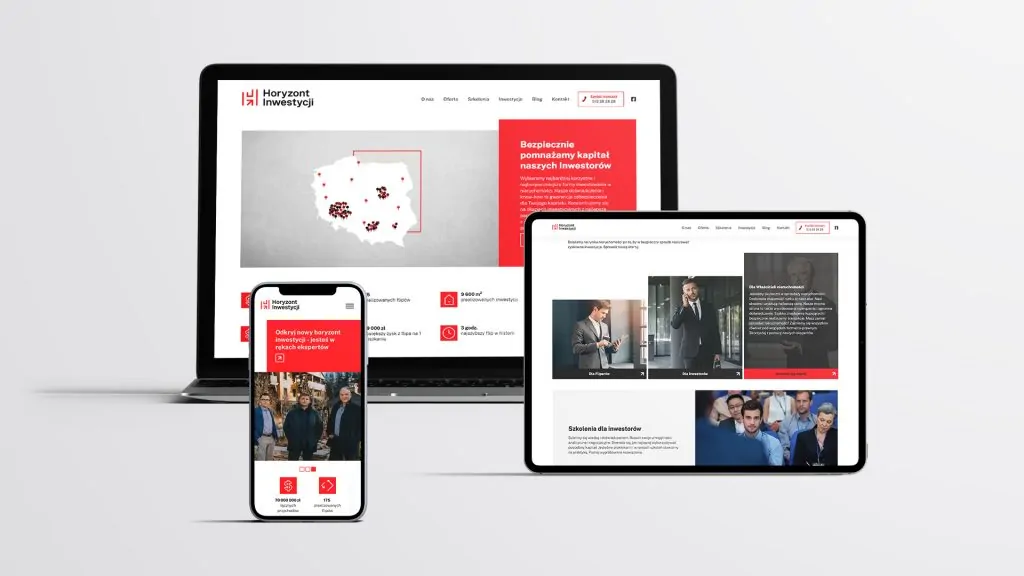Brand design and keeping it afloat is a challenge that requires adequate preparation and full commitment. Unfortunately, many companies fail already in their first year of operation. Why? The reason for failure is often the inability to differentiate a new brand from others. A successful brand must be different from the competition! How do you make a new brand stand out?
What will you learn from the article?
Brand design is one of the key elements in building a strong market position. For companies and entrepreneurs who want to stand out from the competition, a good designed brand can be a critical success factor. In this article, we will outline what is branding design, what benefits it brings, and what steps to take to create an effective and recognisable brand.
Contents:
- What is brand design?
- Why is brand design important?
- Effective brand design - find its attributes
- How to design a strong brand?
- Brand design step by step
- Branding - the importance of consistency in brand communication
- Brand design - integration into the customer experience
- What makes up brand design?
- When to start designing a brand strategy?
- Who is brand design for?
What is brand design?
Brand design is the process of creating a unique identity for a company or product that sets it apart from the competition. It encompasses not only visual elements such as logos, colours and fonts, but also the way the brand communicates, the values and the emotions it evokes in its audience.
Why is brand design important?
A strong brand allows customers to easily recognise and remember a company. A unified visual identity and consistent communication help build brand awareness. Professionally designed brand builds trust among customers. A consistent image and clear company values attract customers who are more likely to purchase products or services from a company they trust.
When a brand evokes positive emotions and is associated with values that are important to customers, it becomes more likely that customers will return and recommend it to others. In a competitive business environment, a unique brand is key to standing out. Well designed brand can help a company gain a competitive advantage.
Are you missing an effective branding plan?
We know what actions should be taken!
Effective brand design - find its attributes
An important step brand design is first and foremost to find the attributes, the unique qualities that will differentiate it from other, competing brands. The first way to differentiate a brand is to highlight the uniqueness of the product on offer:
- the product is innovative, impossible to counterfeit,
- the product is of the highest quality that no one else can achieve,
- the brand has a secret recipe, unique materials or an extraordinary approach that is not known and used by no one else,
- the product is characterized by a unique design.
Today, in the era of a highly developed market and high competition, it is difficult to create a product that will be completely different from the others, unique, one that cannot be counterfeited. Only a few brands can use this form of distinction.
However, a more accessible way to break a new brand on the market is to emphasize its unique character. Brand design is, among others giving it unique human characteristics with which the recipients will be able to identify. Brand attributes worth emphasising with an aesthetically pleasing visual identity, the tone of communication and also the form of marketing.
It is important that all the brand's activities are consistent with the values it wants to represent. A unique brand personality will create specific feelings in the minds of the audience when they think of the brand. This is the best way to gain the trust of the target audience and build a strong community around the brand that will help it gain a competitive advantage in the marketplace.

How to design a strong brand?
The first step in brand design is a thorough analysis of the market and the competition. By understanding what other brands are differentiated by and what customers' expectations and needs are, a unique value proposition can be created. Every brand should also have a clearly defined mission and vision statement to guide the creation of the brand identity. The mission statement defines why the company exists, while the vision statement describes what the company aims to achieve.
Visual brand elements such as logos, colours, fonts and graphics should be consistent and reflect the character of the company. A professionally designed visual identity helps to build recognition. Another important element is the brand voice, i.e. the way the company communicates with its audience. It should be consistent across all communication channels and reflect the values and personality of the brand. A strong brand also relies on building the customer experience. The customer's experience with the brand should be positive at every stage of contact. From first impression to after-sales service, every interaction should reinforce a positive brand image.
It is important to remember that brand design is an ongoing process. It is important to monitor how the brand is perceived by customers and, if necessary, make changes and adaptations to meet changing market needs.
Brand design step by step
Brand design is a complex process. The entrepreneur needs to know the market and his or her target audiencebut also to prepare a decent brand development strategy, taking into account the brand's identity, vision, long-term and short-term goals, etc. Brand design is also an art that requires many elements to come together in a coherent whole. However, an idea and decent preparation alone does not guarantee business success. New brands have to face a high entry threshold and enormous competition. A brand that wants to realise marketing goals and be successful, it must in some way distinguish itself from its competitors on the market. How to get it right?
Branding - the importance of consistency in brand communication
In the process brand design It is crucial to ensure consistency of communication on all levels. Regardless of the channel - be it social media, website or printed materials - a consistent message strengthens recognition and builds trust with the audience. That is why brand design should incorporate uniform values, communication tone and visual identity to create a strong and recognisable brand in the market.
Brand design - integration into the customer experience
Effective branding requires understanding and integration with the customer experience at every stage of their contact with the company. Every point of contact - from the initial contact, through the buying process to after-sales service - should reflect the brand's values. This approach in brand design not only increases customer satisfaction, but also builds customer loyalty. Working with an experienced branding agency can help to effectively integrate the brand into the customer experience, providing a comprehensive approach to branding.
What makes up brand design?
Brand design is much more than just a logo or a colour scheme. It is a comprehensive process that encompasses both the visual elements and the strategic aspects of the company. As part of brand design mission, vision, values and a unique value proposition are defined, which form the foundation for communication with the audience. A key stage is also designing a brand strategywhich involves analysing the market, the competition and the customers' needs in order to determine the precise positioning of the brand. It is also important to develop a communication tone and visual identity, which together build brand recognition and trust.
When to start designing a brand strategy?
The decision to start brand design should be undertaken as early as the business planning stage. Early involvement allows you to build a strong foundation that will support the growth of your business. Carry out brand design at the beginning of the business enables the precise definition of the target group, values and unique features that will differentiate the company in the market. However, even long-established companies can benefit from a process of brand designespecially when faced with rebranding, expansion into new markets or a change in business strategy.
Who is brand design for?
Brand design is an essential process for any organisation, regardless of its size or industry. For start-ups, brand design is the foundation on which the whole business is built, enabling it to stand out in the marketplace and attract its first customers. Small and medium-sized enterprises benefit from design of brand strategy in order to consolidate their position and increase their visibility among competitors. Large corporations, although well-established, are also investing in brand design when introducing new products, entering new markets or responding to changing consumer preferences. Non-profit organisations and public institutions use brand design to build trust and community involvement.

